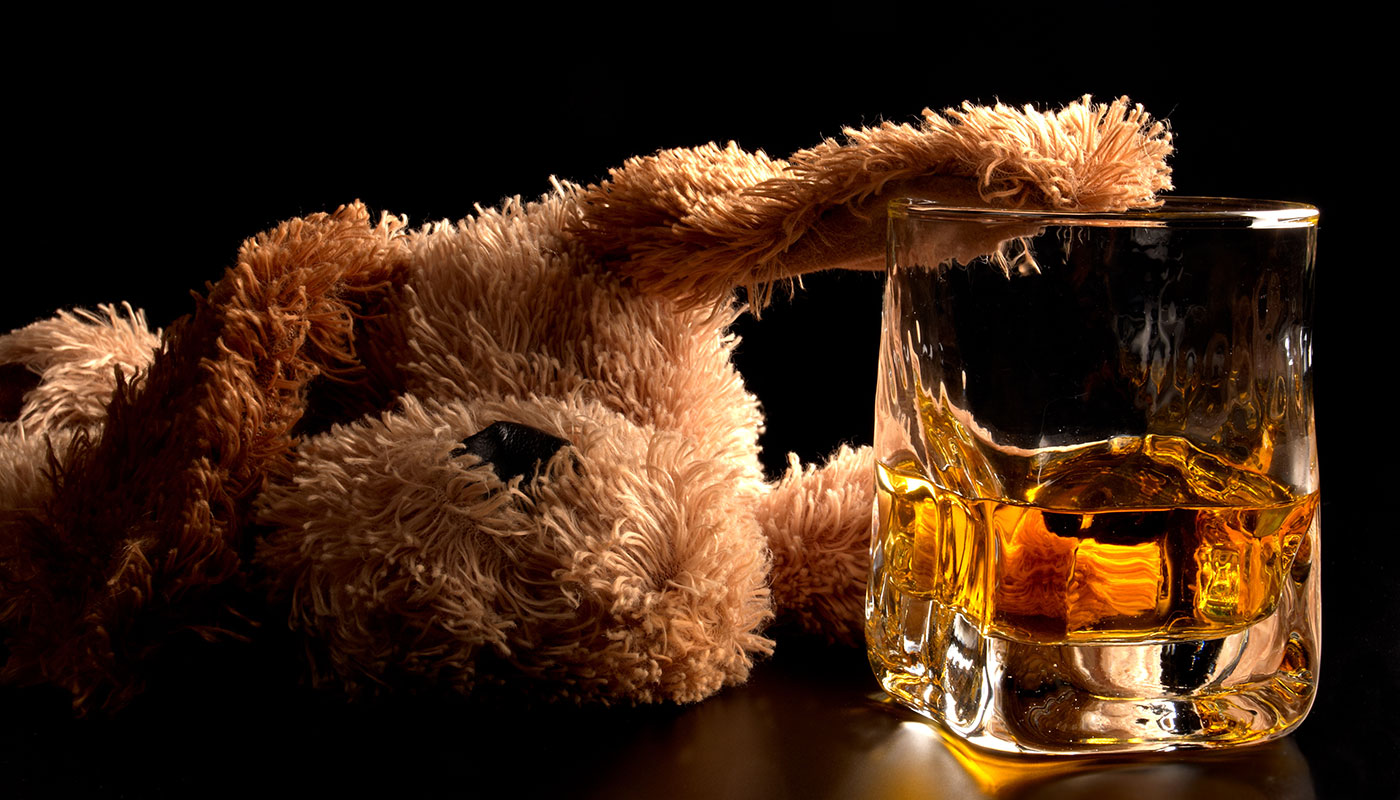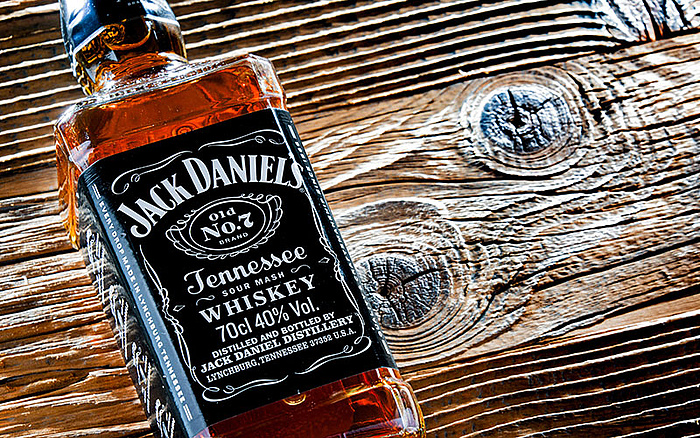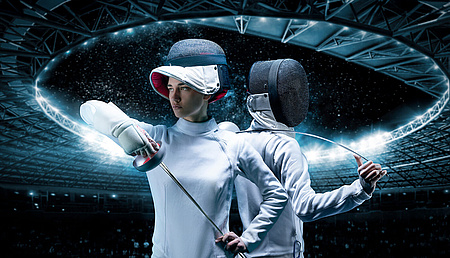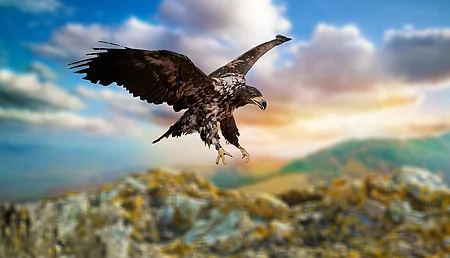
Every dog has his day (in court)
The beginning of a new year in Intellectual Property (IP) carries with it the holdovers of the old – litigation and all. But some things are worth looking forward to every month. So we put our best foot forward and get 2023's IP news off to a flying start with two fascinating stories from the United States and a copyright conundrum to consider.
Hair of the trademark that bit me
The marketplace can be a dog-eat-dog world at the best of times, but the dispute between Jack Daniel's and VIP Products LLC is no mere barroom brawl. What started out as just another case of alleged trademark infringement has escalated to involve the highest echelons of the United States government's judicial and executive branches.
And it is a story with all the ingredients of a classic country and western ballad, full of fights, the law, whiskey bottles and… dog toys.
Whiskey maker Jack Daniel's goes to great pains to protect its registered trademarks, not least those pertaining to its flagship product and the distinctive container it comes in. So when VIP Products marketed a dog toy in the shape of Jack Daniel's iconic bottle, the latter's hackles were up, prompting them to send a cease and desist letter.
But VIP did not back down, approaching an Arizona federal court in 2014 to rule that the parodic nature of the "Bad Spaniels" toy did not infringe nor dilute any trademark rights belonging to the distiller. The idea of diluting Jack Daniel's is anathema to many, and Senior Judge Stephen McNamee is one of them, ruling in 2018 that there was a likelihood of confusion and reputational harm.

Many aspects of the Jack Daniel's visual presentation, or "trade dress," are individually protected with their own trademark registrations, including the stylized name and "Old No. 7 BRAND" logo. (Image credit: monticellllo - stock.adobe.com)
But how could a reasonable person mistake a dog toy, boasting such delectable selling points as "43% POO BY VOL." and "100% SMELLY," with what is arguably the world's most famous Tennessee whiskey (not bourbon)? Surely one would have to be blind drunk.
Be that as it may, it is not the point of contention. This is because trademarks indicate the commercial origin of a product or service. On top of that, Jack Daniel's owns an extensive portfolio of trademarks covering products in numerous Nice Classifications, including Class 28, containing toys for pets. Therefore, a consumer could conceivably misinterpret the "Bad Spaniels" toy as official Jack Daniel's merchandise, earthy messages notwithstanding.
However, this decision was overturned two years later by the 9th U.S. Circuit Court of Appeals in San Francisco. The Californian panel of judges concluded that the squeaky toy was "an expressive work entitled to First Amendment protections." Though the humor may be of a very different color to whiskey's syrupy gold, it was still protected speech in the eyes of the Appeals Court.
Finally, on November 21, 2022, the Supreme Court accepted a second petition for a writ of certiorari filed by Jack Daniel's. But before the matter is brought to a close, there is one final wag to this tale.
On January 18, 2023, the Solicitor General of the Department of Justice, the U.S. government's official representative before the Supreme Court, filed an amicus curiae (friend of the court) brief supportive of Jack Daniel's appeal. The brief was critical of both prior judgments by the lower courts: "The parodic nature of an allegedly infringing use of a mark in commerce should be taken into account when applying the Lanham Act's likelihood-of-confusion standard, but it does not justify adding to or displacing the statutory standard. […] The court of appeals did not apply that standard at all, and the district court wrongly disregarded respondent's claim of parody."
While the Supreme Court is not obliged to consider the arguments as made by Solicitor General Elizabeth Prelogar's office, the highest court in the land typically gives close ear to its peers in the executive branch.
All that remains to be seen is who is barking up the wrong tree.
A megabyte out of the Apple
This relationship between the Supreme Court and the Solicitor General's office is far from one way. The day before the amicus curiae brief was filed, the Supreme Court requested the Solicitor General's opinion on whether to review a patent infringement case brought by the California Institute of Technology (Caltech) against Apple and Broadcom.
Caltech's grievance relates to a series of patents awarded for improved wireless data transmission between 2006 and 2012. The California research institute alleged that the Broadcom chips used in millions of Apple mobile devices infringed upon its IP rights to Wi-Fi developments. In 2020, a jury trial in the District of California awarded Caltech an eye-watering $1.1 billion USD (plus interest) in damages from Apple and Broadcom, a figure vacated two years later upon appeal.

The smartphone revolution that Apple kickstarted was just one in a series of events that transformed a company teetering on the verge of bankruptcy in 1997 into a multi-trillion-dollar behemoth.
Though the U.S. Court of Appeals for the Federal Circuit set aside this figure in February last year, it upheld most of the findings of infringement and remanded for a new trial on damages. With the chips very much down, Apple and Broadcom approached the Supreme Court, maintaining that they had been unacceptably prevented from arguing the invalidity of the Caltech patents.
The case appears to be leaning in Caltech's favor, but like the Wi-Fi signal you might be using to read this article, the questions of validity, late challenges and damages are still up in the air.
Poking the bear (and mouse)
Not long ago, we discussed the uncertainty surrounding how images generated by artificial intelligence (AI) interact with the current IP framework. In exploring this topic, we asked:
- Does "training" an AI on copyrighted works constitute infringement, or does it align with fair use / dealing exceptions?
- Can artists be materially damaged by AI-generated images derived from their work?
Unfortunately, there are no concrete answers to these questions as of yet, so a few intrepid artists are taking matters into their own hands by goading one of the biggest copyright heavyweights around into a fight.
Eric Bourdages, a 3D character artist, recently caused a stir on Twitter by encouraging others to sell products bearing AI-generated images of Mickey Mouse, superheroes and celebrities. Evidently, Bourdages' intention is not to profit from piracy but to establish a clear legal precedent by forcing IP juggernauts to defend their plethora of trademarks and copyrights against AI derivations.

It cannot be denied AI image generators have a talent for controversy. The picture they have painted is awash with clashing IP interests, bold themes of ownership and creativity and striking statements on the nature of copyrights that simultaneously invite and challenge interpretation.
Though the convergence of AI and IP involves far more than specific rights holders or programs, much of the wrangling centers on a dataset of some 5.85 billion image-text pairings called LAION-5B. That this collection, used to train various AI programs, was gathered without the knowledge and consent of copyright holders has incensed artists such as Bourdages.
Expanding copyright exemptions to include "non-consumptive use" by search engines and data-caching programs remains a controversial solution, yet is unlikely to quell objections to derived images. As early as April 2019, the EU introduced two exceptions in its Directive on copyright and related rights in the Digital Single Market. The first permits unfettered access to online data for the purposes of scientific research ("Article 3"), and the second provides for commercial text and data mining ("Article 4"); however, rights holders may choose to withhold access to their material under Article 4.
The United Kingdom Intellectual Property Office (UKIPO) has proposed even broader permissions, spurring the House of Lords to admonish strongly against the potential harm to copyright holders and the creative industries. Perhaps sensing the time was right to pursue legal remedy in the United Kingdom, Getty Images announced on January 19, 2023, that it had commenced legal proceedings against Stability AI in the High Court of Justice in London. The image licensing giant claims that "Stability AI unlawfully copied and processed millions of images protected by copyright and the associated metadata owned or represented by Getty Images absent a license."
Though the United Kingdom's fair dealing exceptions are somewhat tighter than the fair use standards present in the United States, this litigation could be the saving grace of independent artists everywhere who may be inclined toward IP martyrdom.
It seems there is no need to take the mickey out of Mickey after all.
Filed in

Explore the latest IP dramas, from an Olympic trademark dispute to challenges in drug patenting and a lawsuit for allowing music piracy.



